Abstract
Feeley, John C. (National Institutes of Health, Bethesda, Md.). Classification of Vibrio cholerae (Vibrio comma), including El Tor vibrios, by infrasubspecific characteristics. J. Bacteriol. 89:665–670. 1965.—A study of the properties of 220 serotype O group I vibrios indicated striking similarity in most of their properties. However, by using four tests often applied in the identification of the El Tor vibrio, five types were identified and characterized as follows: type 1 strains, phage IV-sensitive, nonhemolytic by tube and plate methods, unable to agglutinate chicken red cells (CCA), and Voges-Proskauer (VP) negative or weakly positive at 22 C; type 2, same as type 1 except for CCA; type 3, phage IV-resistant, CCA and VP usually positive, and strongly hemolytic by tube and plate methods; type 4, same as type 3, except hemolytic only by plate method unless culture has undergone pronounced rugose variation; and Type 5, same as type 3, except stably nonhemolytic. Type 1 and type 3 strains possess the characteristics usually ascribed to classic cholera vibrios and El Tor vibrios, respectively. Geographical and chronological distribution of the types is discussed. The thesis is presented that it is invalid to recognize two species, V. cholerae and V. eltor, because alleged differences are infrasubspecific. Recognition of a single species, V. cholerae, consisting of several types, is recommended.
Full text
PDF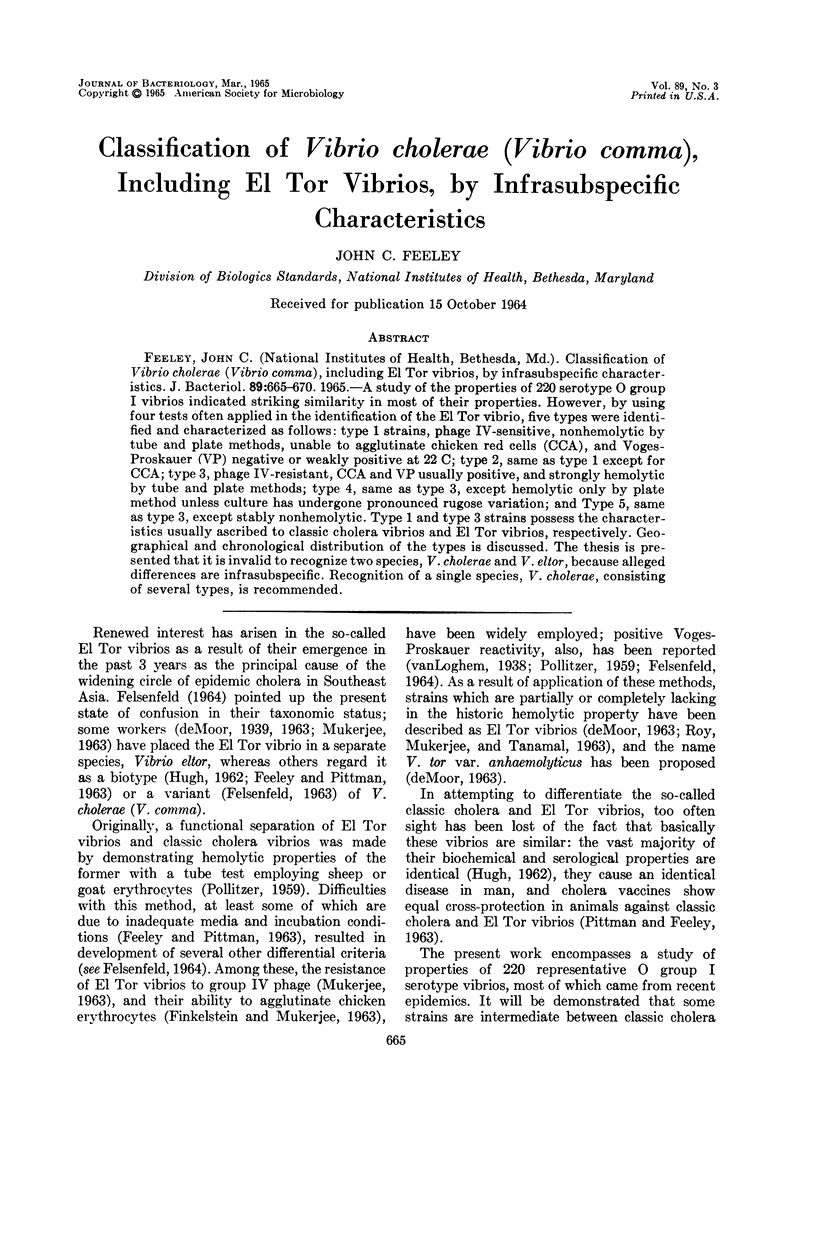
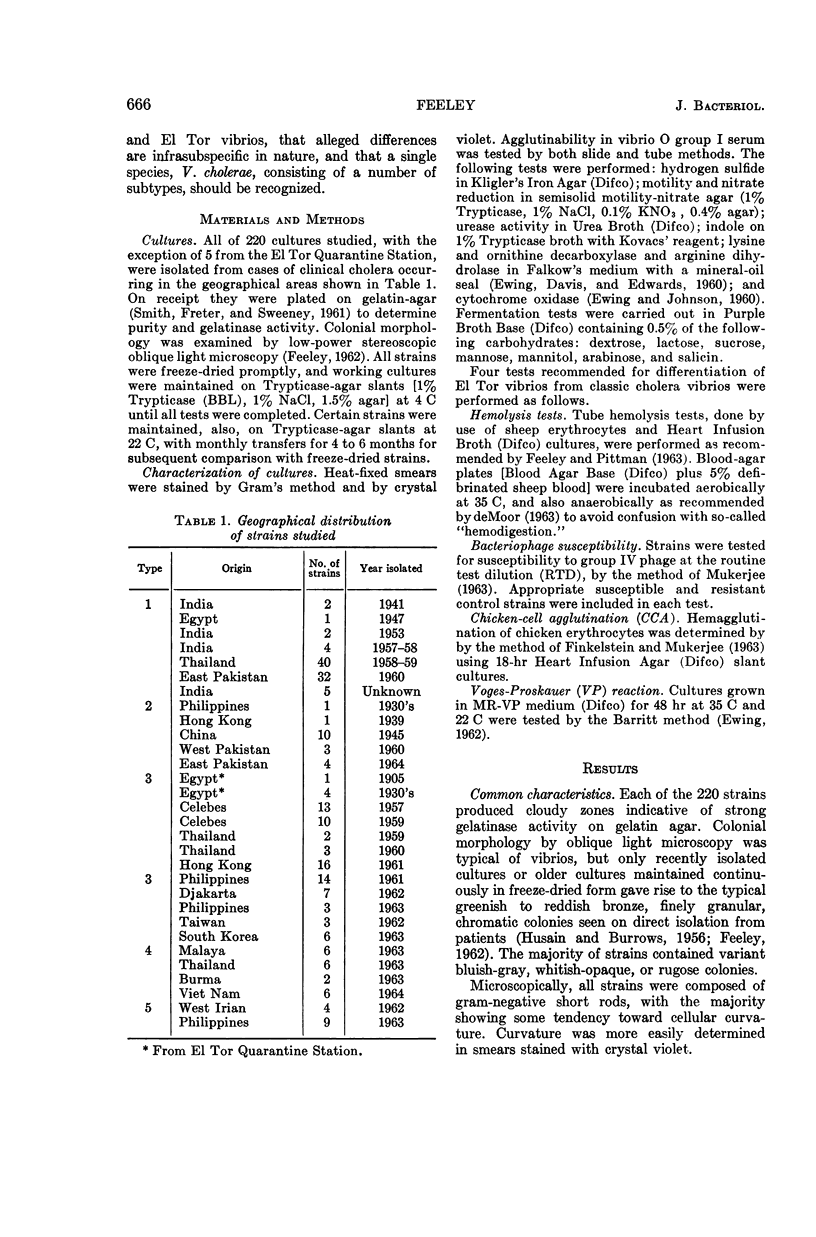
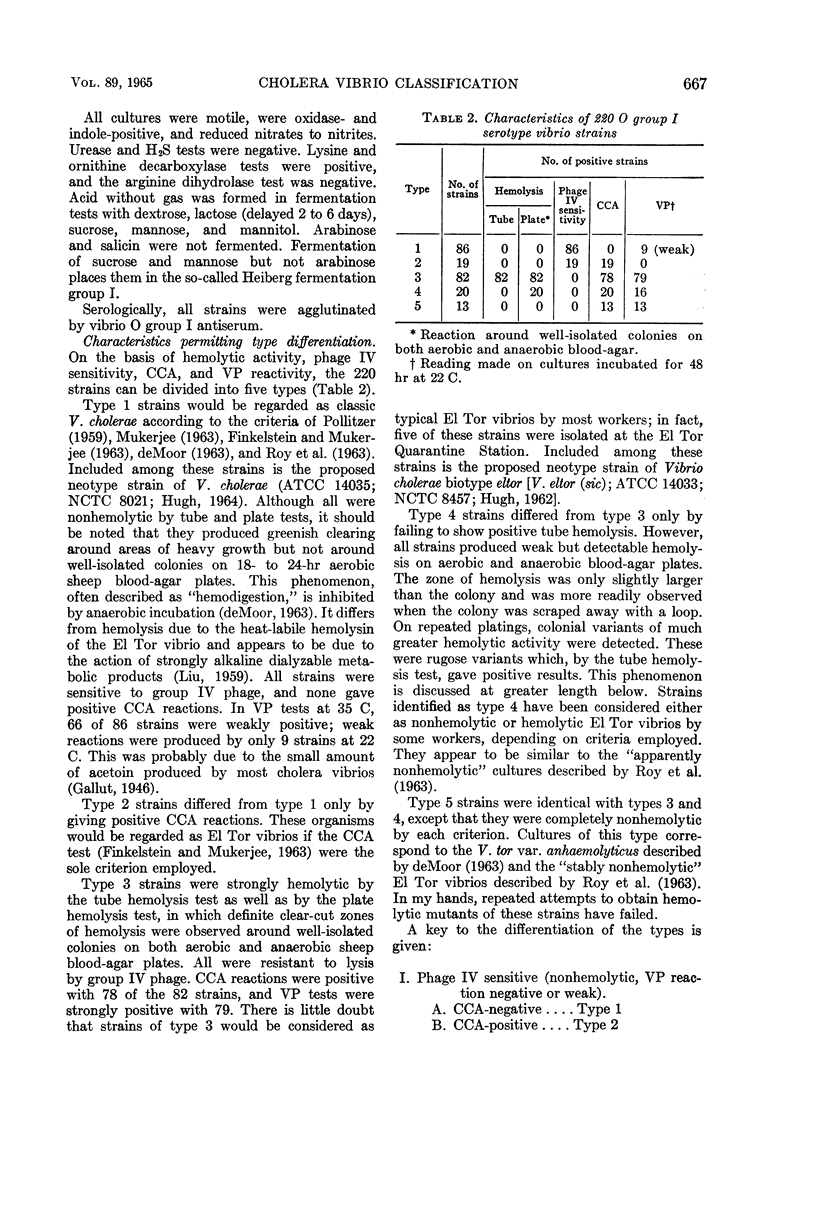
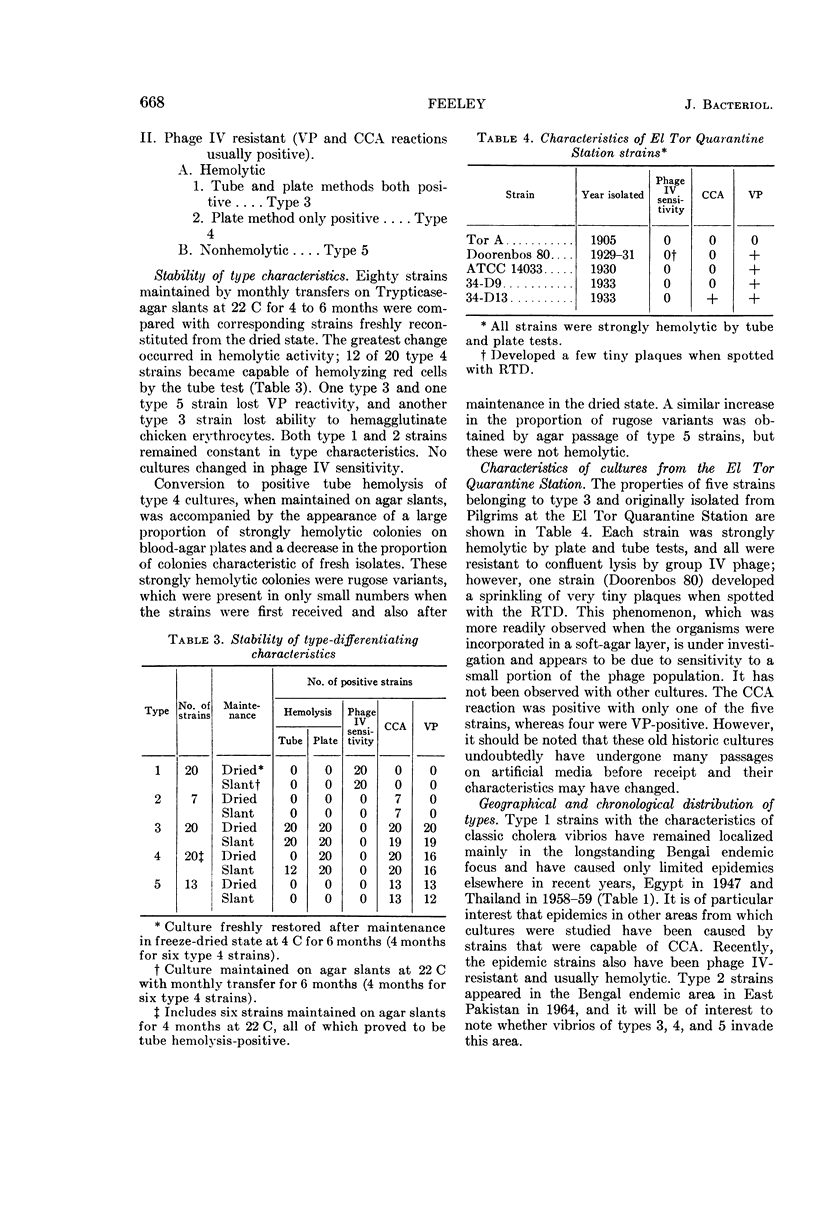
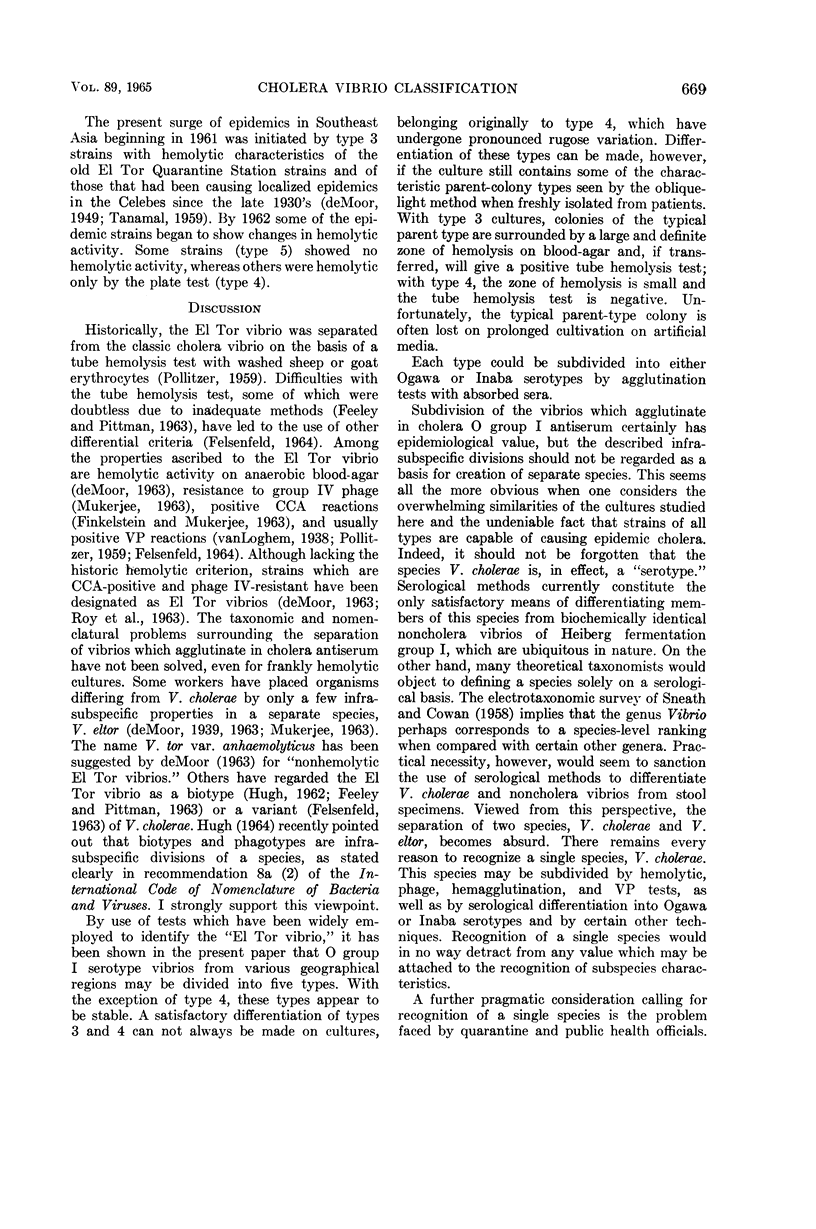
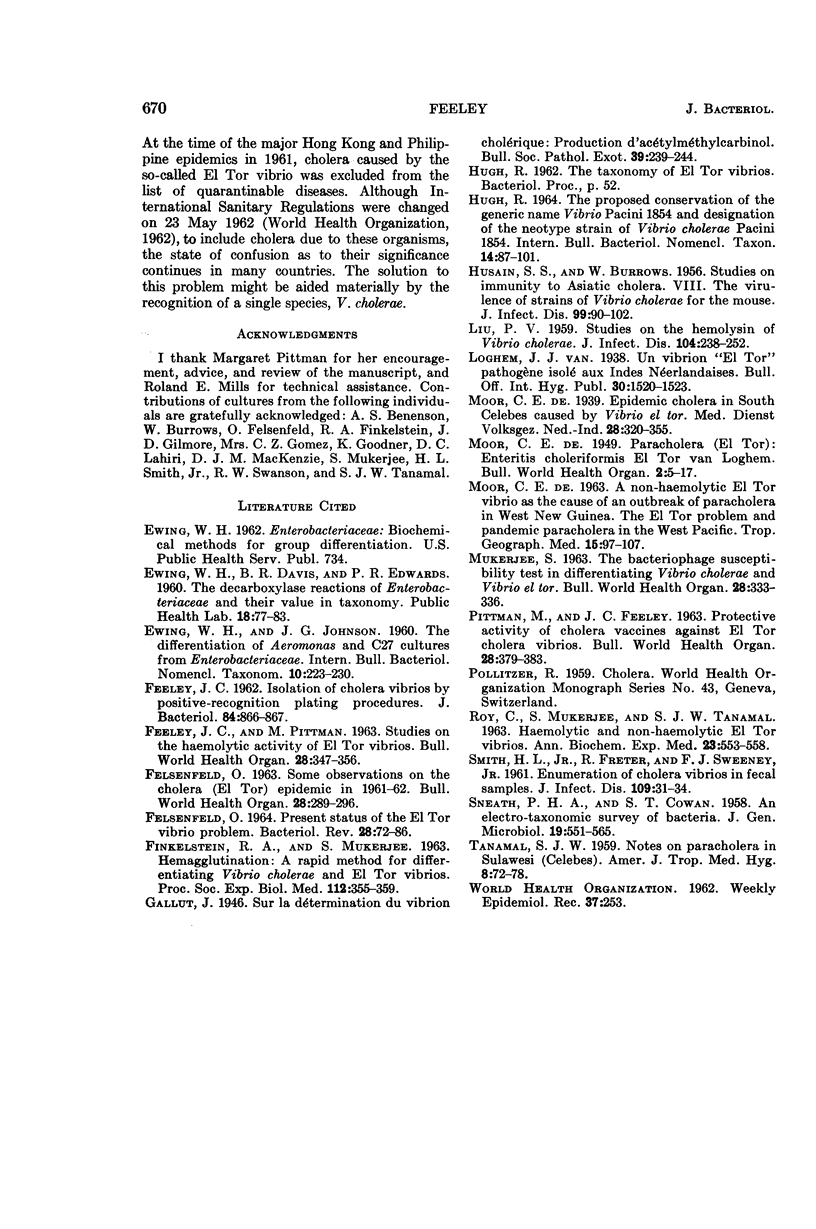
Selected References
These references are in PubMed. This may not be the complete list of references from this article.
- BURROWS W., HUSAIN S. S. Studies on immunity to Asiatic cholera. VIII. The virulence of strains of Vibrio cholerae for the mouse. J Infect Dis. 1956 Jul-Aug;99(1):90–102. doi: 10.1093/infdis/99.1.90. [DOI] [PubMed] [Google Scholar]
- DE MOOR C. E. A NON-HAEMOLYTIC EL TOR VIBRIO AS THE CAUSE OF AN OUTBREAK OF PARACHOLERA IN WEST NEW GUINEA. THE EL TOR PROBLEM AND PANDEMIC PARACHOLERA IN THE WEST PACIFIC. Trop Geogr Med. 1963 Jun;15:97–107. [PubMed] [Google Scholar]
- FEELEY J. C. Isolation of cholera vibrios by positive-recognition plating procedures. J Bacteriol. 1962 Oct;84:866–867. doi: 10.1128/jb.84.4.866-867.1962. [DOI] [PMC free article] [PubMed] [Google Scholar]
- FEELEY J. C., PITTMAN M. Studies on the haemolytic activity of El Tor vibrios. Bull World Health Organ. 1963;28(3):347–356. [PMC free article] [PubMed] [Google Scholar]
- FELSENFELD O. PRESENT STATUS OF THE EL TOR VIBRIO PROBLEM. Bacteriol Rev. 1964 Mar;28:72–86. doi: 10.1128/br.28.1.72-86.1964. [DOI] [PMC free article] [PubMed] [Google Scholar]
- FELSENFELD O. Some observations on the cholera (E1 Tor) epidemic in 1961-62. Bull World Health Organ. 1963;28(3):289–296. [PMC free article] [PubMed] [Google Scholar]
- LIU P. V. Studies on the hemolysin of Vibrio cholerae. J Infect Dis. 1959 May-Jun;104(3):238–252. doi: 10.1093/infdis/104.3.238. [DOI] [PubMed] [Google Scholar]
- PITTMAN M., FEELEY J. C. Protective activity of cholera vaccines against E1 Tor cholera vibrios. Bull World Health Organ. 1963;28(3):379–383. [PMC free article] [PubMed] [Google Scholar]
- ROY C., MUKERYEE S., TANAMAL S. J. HAEMOLYTIC AND NON-HAEMOLYTIC EL TOR VIBRIOS. Ann Biochem Exp Med. 1963 Dec;23:553–558. [PubMed] [Google Scholar]
- SNEATH P. H., COWAN S. T. An electro-taxonomic survey of bacteria. J Gen Microbiol. 1958 Dec;19(3):551–565. doi: 10.1099/00221287-19-3-551. [DOI] [PubMed] [Google Scholar]
- TANAMAL S. T. Notes on paracholera in Sulawesi (Celebes). Am J Trop Med Hyg. 1959 Jan;8(1):72–78. doi: 10.4269/ajtmh.1959.8.72. [DOI] [PubMed] [Google Scholar]


